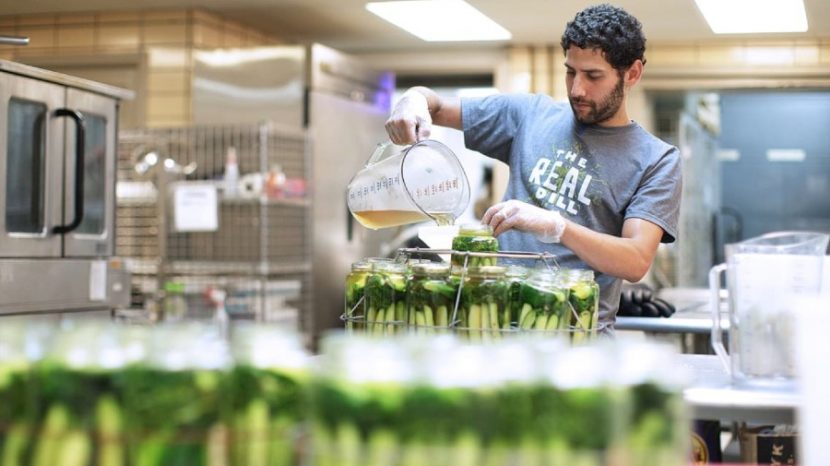How Retailers and Producers Can Reduce Food Waste Safely and Sustainably
By Louise Grinyer
Approximately two thirds of UK consumers surveyed highlighted a willingness to compromise factors such as product consistency, availability and convenience of packaging in order to support food and beverage companies delivery against food waste. Retailers such as Tesco are already moving to support this by removing expiration dates from certain fresh produce like apples, potatoes and onions. Soon, the pressure to deliver against food waste will make its way to manufacturers.
Technical stakeholders have a key role to play in enabling these agendas to be realised safely. Sustainability, for example, and obvious indicators like carbon dioxide equivalent (g/CO2e), means food waste is gaining increased attention by all stakeholders including consumers, scientific, and regulatory agencies as a trend that’s here to stay.
sourcing from a broader number of suppliers or locations increases the demands on conventional audits
Although identifying food waste opportunities is relatively straight forward, they can be harder to realise. Some of the key issues are outlined below and whilst they rarely require new solutions, they will certainly be eased by new technologies and ‘smart’ processing systems. However, they will also demand a culture shift, particularly to manage the transformation from ‘waste’ to ‘commodity’.
Broadening the requirements of processing conditions and equipment
Using different (e.g. seasonal) varieties of vegetables to produce snack products introduces a more varied input stream to the manufacturing process. Even basic physical differences in products: new shapes and sizes can cause challenges – demanding different cleaning, slicing and cooking requirements. Each change requires validation to ensure safety and quality, an update to the HACCP plan and potentially capital expenditure.
Coping with supply chain complexity
Increasing variation in the supply chain can support both climate resilience, cost reduction and improvements in agricultural biodiversity, but sourcing from a broader number of suppliers or locations increases the demands on conventional audits and risk management practices, making them increasingly complex and potentially opaque and/or cost prohibitive. Digitisation tools such as blockchain have a role to play here and will undoubtedly support greater traceability and risk management in environments with added complexity.
Shifting cultural perceptions and processes from ‘waste’ to ‘ingredient’
Using waste streams such as spent grain to produce ingredients high in protein or fibre for resale requires a manufacturer to shift their perspective: by-products would no longer be waste products, but a process/commodity to be handled safely. This can be challenging to address from a cultural perspective. However, processes that must be implemented: risk assessment, HACCP, training and the like will all be familiar.
Regulatory and contamination barriers
There may also be practical and/or regulatory barriers to consider when looking to increase biodiversity, utilise waste streams, or move into more sustainable food sources, especially in emerging categories like plant-based meats, from both a safety and regulatory perspective. For example:
- Whether further processing would produce antinutrients or concentrate contaminants such as pesticides present in the original source material
- Whether suitable storage conditions are available for intermediates and the finished product, to prevent mycotoxin formation
- The implication of GMOs
- Cross-contamination of allergens or introduction of additional allergens into manufacturing sites
- Consideration to novel foods
Fundamentally, the primary goal to produce safe food that consumers love must remain unchanged. This can undoubtedly be done in a more sustainable way to reduce food-waste across the supply chain, but the potential challenges to achieve this should not be under-estimated. In acknowledging this, we have responsibility to try, as more consumers demand this of us.
About the Author:
Louise Grinyer manages the Food Safety and Analytical Department at Leatherhead Food Research and has been with the company for 15 years. She conducts microbiological risk assessments and audits,and is responsible for UKAS accredited microbiological shelf life and challenge testing. Louise has significant expertise in microbiological analysis of a wide range of food and drink matrices, and manages numerous wide-ranging research projects, including accelerated shelf life and stability trials, method validation trials for microbiological media and instrumentation.

-
 FeaturedRisk management
The Cost of a Breach: What a Cyberattack Could Mean for Food Safety Recalls
FeaturedRisk management
The Cost of a Breach: What a Cyberattack Could Mean for Food Safety Recalls
-
 FeaturedRisk management
Securing the Food Chain: How ISO/IEC 27001 Strengthens Cybersecurity
FeaturedRisk management
Securing the Food Chain: How ISO/IEC 27001 Strengthens Cybersecurity
-
 FeaturedRisk management
Revolutionizing Food Safety Training: Breaking Out of the “Check-the-Box” Mentality
FeaturedRisk management
Revolutionizing Food Safety Training: Breaking Out of the “Check-the-Box” Mentality
-
 GFSI Standards
GFSI 2025: Building Trust, Tech-Forward Solutions, and Global Unity in Food Safety
GFSI Standards
GFSI 2025: Building Trust, Tech-Forward Solutions, and Global Unity in Food Safety
-
 FeaturedFood Safety
Integrated Pest Management: Strategies to Protect Your Brand’s Reputation
FeaturedFood Safety
Integrated Pest Management: Strategies to Protect Your Brand’s Reputation
-
 FeaturedFood Safety Culture & Training
No Open Door Policy: Challenges That Impact Pest Control in Food Processing Plants
FeaturedFood Safety Culture & Training
No Open Door Policy: Challenges That Impact Pest Control in Food Processing Plants




